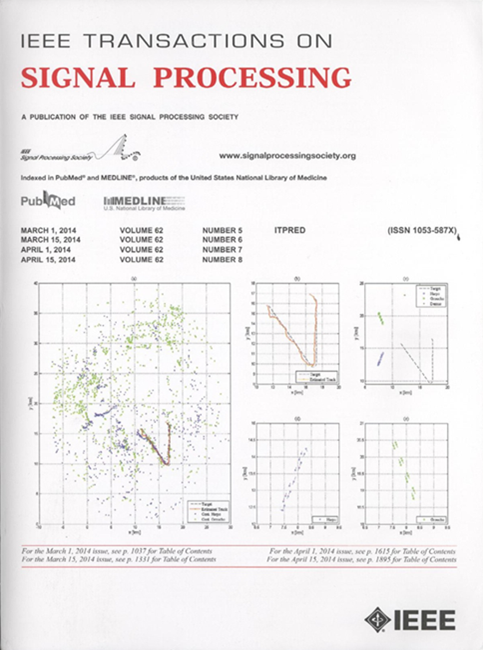Joint Visibility Region Detection and Channel Estimation for XL-MIMO Systems via Alternating MAP
IF 4.6
2区 工程技术
Q1 ENGINEERING, ELECTRICAL & ELECTRONIC
引用次数: 0
Abstract
We investigate a joint visibility region (VR) detection and channel estimation problem in extremely large-scale multiple-input-multiple-output (XL-MIMO) systems, where near-field propagation and spatial non-stationary effects exist. In this case, each scatterer can only see a subset of antennas, i.e., it has a certain VR over the antennas. Because of the spatial correlation among adjacent sub-arrays, VR of scatterers exhibits a two-dimensional (2D) clustered sparsity. We design a 2D Markov prior model to capture such a structured sparsity. Based on this, a novel alternating maximum a posteriori (MAP) framework is developed for high-accuracy VR detection and channel estimation. The alternating MAP framework consists of three basic modules: a channel estimation module, a VR detection module, and a grid update module. Specifically, the first module is a low-complexity inverse-free variational Bayesian inference (IF-VBI) algorithm that avoids the matrix inverse via minimizing a relaxed Kullback-Leibler (KL) divergence. The second module is a structured expectation propagation (EP) algorithm which has the ability to deal with complicated prior information. And the third module refines polar-domain grid parameters via gradient ascent. Simulations demonstrate the superiority of the proposed algorithm in both VR detection and channel estimation.通过交替 MAP 实现 XL-MIMO 系统的联合可见性区域检测和信道估计
在存在近场传播和空间非稳态效应的超大规模多输入多输出(XL-MIMO)系统中,我们研究了可见性区域(VR)联合检测和信道估计问题。在这种情况下,每个散射体只能看到一个天线子集,即它对天线有一定的 VR。由于相邻子阵列之间存在空间相关性,散射体的 VR 表现出二维(2D)聚类稀疏性。我们设计了一个二维马尔可夫先验模型来捕捉这种结构稀疏性。在此基础上,我们开发了一种新颖的交替最大后验(MAP)框架,用于高精度 VR 检测和信道估计。交替最大后验(MAP)框架由三个基本模块组成:信道估计模块、VR 检测模块和网格更新模块。具体来说,第一个模块是一种低复杂度的无反变贝叶斯推理(IF-VBI)算法,它通过最小化宽松的库尔巴克-莱布勒(KL)分歧来避免矩阵反演。第二个模块是结构化期望传播(EP)算法,它能够处理复杂的先验信息。第三个模块通过梯度上升来完善极域网格参数。仿真证明了所提算法在 VR 检测和信道估计方面的优越性。
本文章由计算机程序翻译,如有差异,请以英文原文为准。
求助全文
约1分钟内获得全文
求助全文
来源期刊

IEEE Transactions on Signal Processing
工程技术-工程:电子与电气
CiteScore
11.20
自引率
9.30%
发文量
310
审稿时长
3.0 months
期刊介绍:
The IEEE Transactions on Signal Processing covers novel theory, algorithms, performance analyses and applications of techniques for the processing, understanding, learning, retrieval, mining, and extraction of information from signals. The term “signal” includes, among others, audio, video, speech, image, communication, geophysical, sonar, radar, medical and musical signals. Examples of topics of interest include, but are not limited to, information processing and the theory and application of filtering, coding, transmitting, estimating, detecting, analyzing, recognizing, synthesizing, recording, and reproducing signals.
 求助内容:
求助内容: 应助结果提醒方式:
应助结果提醒方式:


